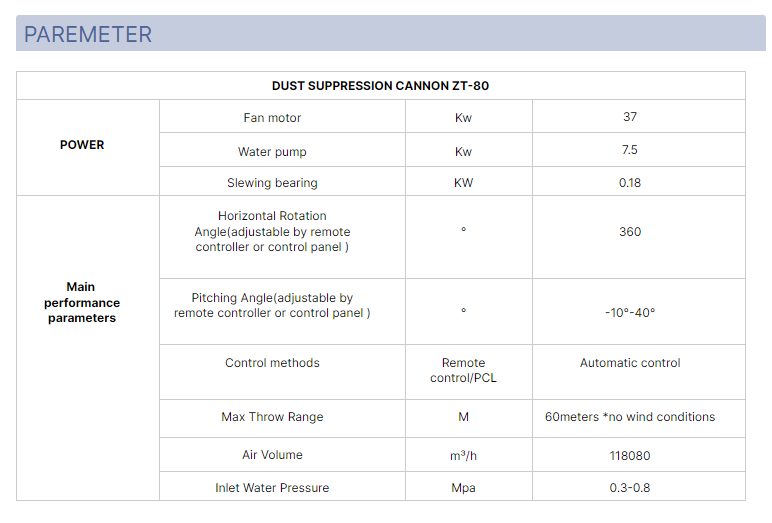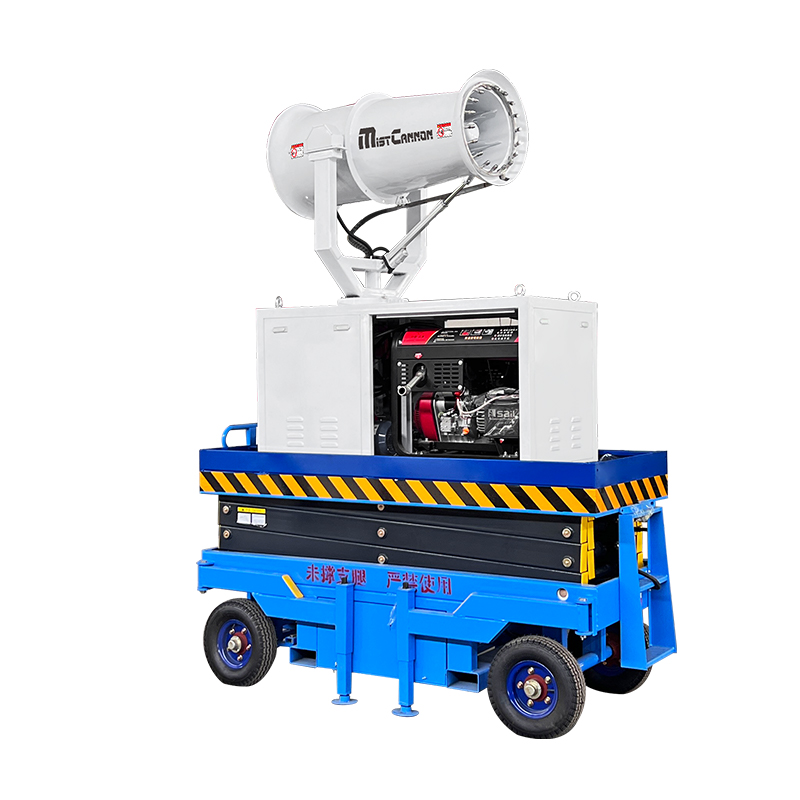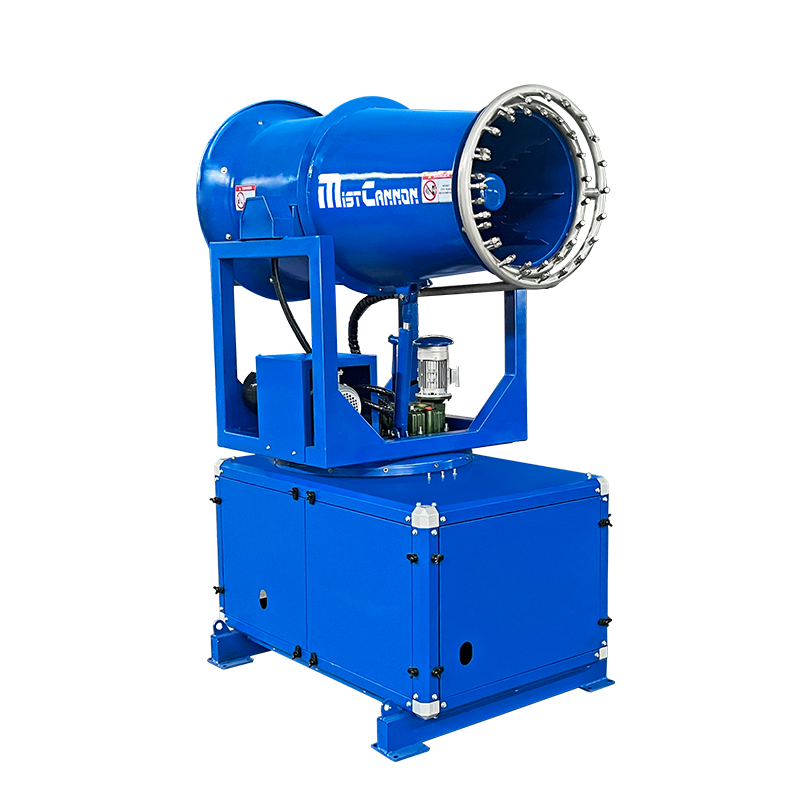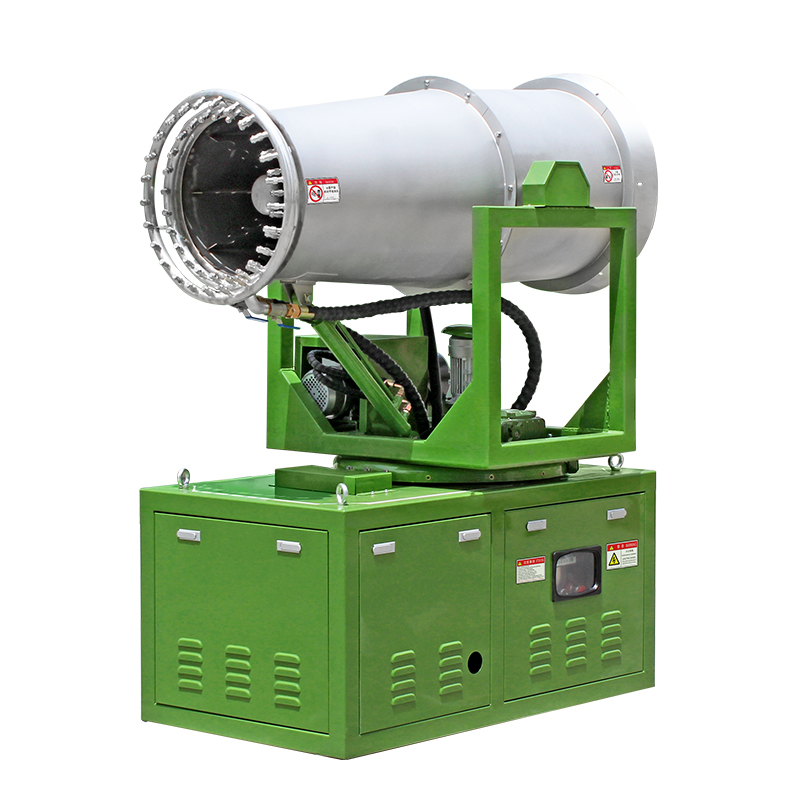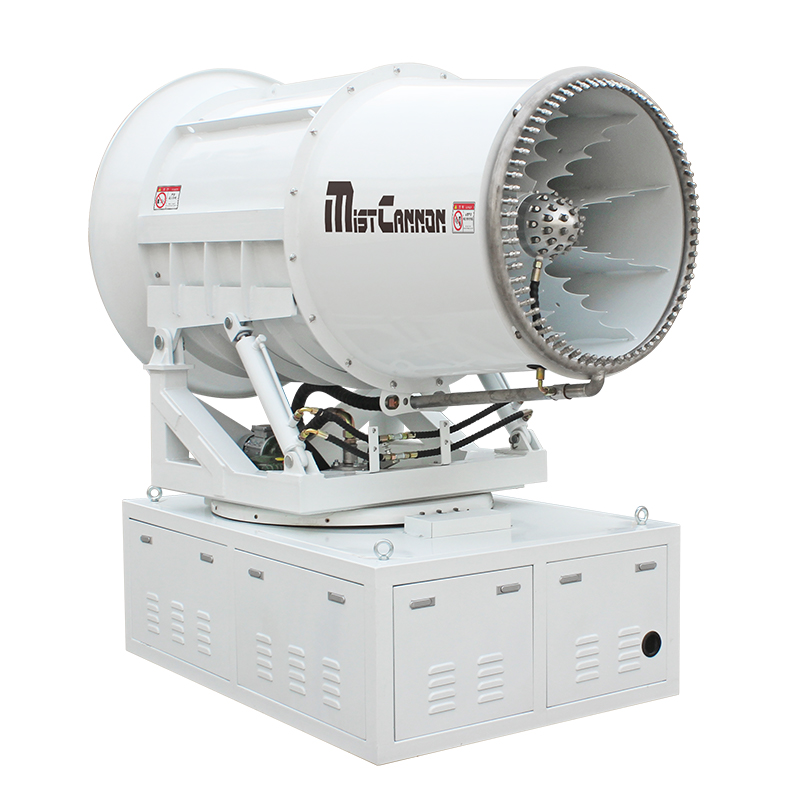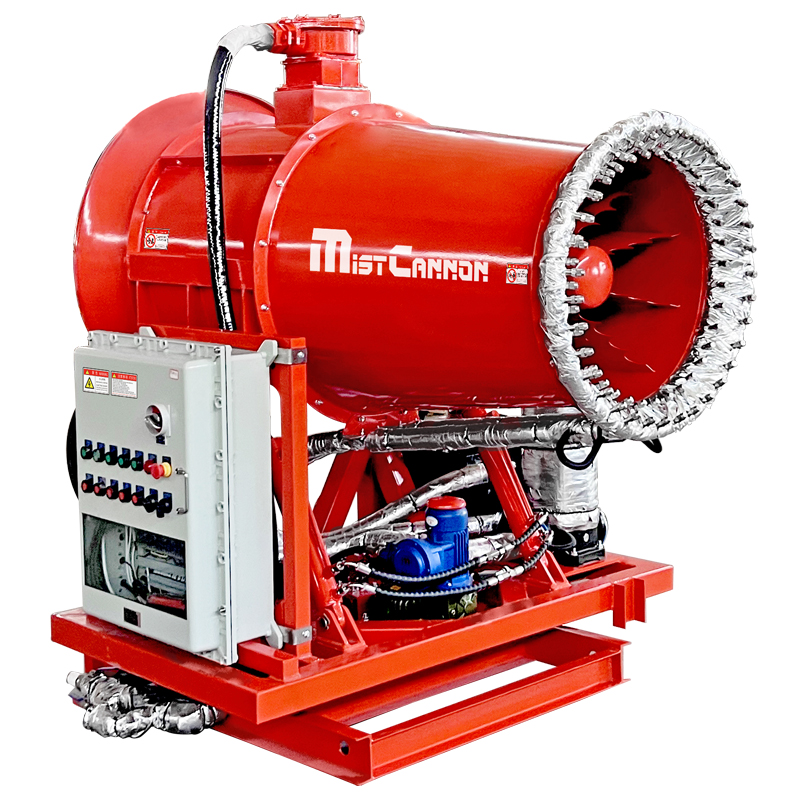The negligible working noise of the fog cannon must be controlled within 85 decibels, and the cause of the fog cannon’s noise is the fan, high-pressure pump noise, and the jet fan used in the fog cannon’s air delivery device. The noise is mainly composed of rotating noise and eddy current noise. The composition is mainly aerodynamic noise. The rotating noise depends on the load of the impeller. When the load of the blades in the large flow area is relatively small, the rotating noise accounts for the main part of the noise. Eddy current noise, also known as turbulence noise, is represented as a broadband continuous spectrum in the noise spectrum. The vortex noise depends on the relative speed of the moving blades, the clearance between the casing and the blades, and the aerodynamic load. When the blades work in a small flow area and the load is relatively large, the eddy current noise takes up the main part. Since the rotating noise is dominant when the flow is large, and the eddy current noise is the dominant when the flow is small, the minimum noise appears between these two ranges. The strength of the two types of noise, rotating noise and eddy current noise, depends on the geometry and operating conditions of the blades.
The mist cannon fan uses large flow and large thrust as the main design indicators, so the noise is mainly rotating noise. After knowing the cause of fog cannon noise, we will adopt specific methods to minimize the decibel of fog cannon noise. The noise of qualified fog cannons will be controlled within the scope of national standards. Since the fog cannon fan is very noisy after it is turned on, the method to solve the fog cannon noise is to use a jet fan with a silencer to reduce the noise of the fan shell. Fog cannon blades use high-strength nylon blades to reduce fan noise.
In addition, the size of the fog cannon fan must be produced in accordance with the technical requirements. Changing the size of the air outlet at will also increase the noise of the fog cannon.
